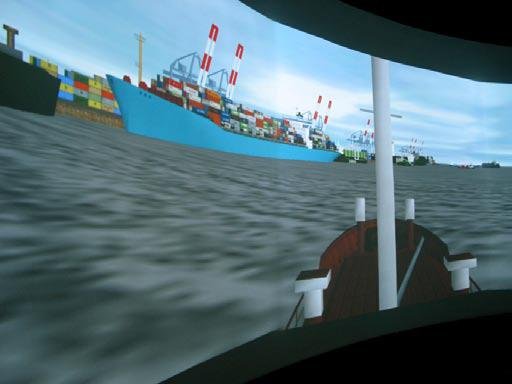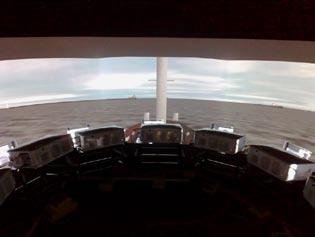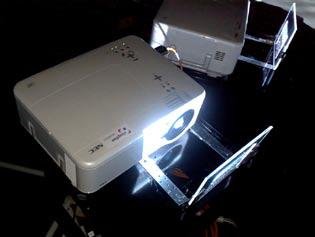To be prepared for further expansions and cycles of maintenance, the University decided for the openWARP (TM) technology to do the geometry-correction of the projectors. openWARP (TM) which was developed by viception and its partners, is a flexible in-thebox solution for real-time warping, blending and compositing of graphic and video signals which fits well between graphic engine and display system. The administration of the simulator also selected the NEC NP4000 projectors as a display engine because they promised to provide enough brightness and contrast - especially for night-simulations.
The new projectors where mounted on top of the simulator cabin. The mounting and calibration units had to be modified and fitted to the new projectors. Further the adjustment had to be done and the old analog cabeling was exchanged by 270 metres of modern DVI-fibre optic cables, to avoid interferences and to deliver stable signals over long distances.
The 3D geometry correction, which means the adaption of the 3D graphics-signal (generated by the Kongsberg simulation software) to the cylindrical projection screen, was done with 3 openWARP (TM) - standard systems. The openWARP(TM) systems are especially suitable, because they are autonomous components between the graphics engine and the projectors, which can remain within the system even during possible future exchange of the projectors or the graphics engine. To do the masking and the blending between each projected image, viception implemented a customized hard-edge blending. Altough openWARP(TM) systems do provide a soft-edge blending it was - in this special case - not suitable to dim the rest light of the DLP projector during night simulations.
Especially remarkable is the short duration of the project. With an extreme fast installation process viception was able to fulfill the customer needs for a "ready-to-fly" system in beginning of September, where the next classes started at the University. Between placement of order and the relaunch of the system had been only five weeks. Now the University of Oldenburg is further able to train captains and officers from all over the world in the newly upgraded and improved simulator.



